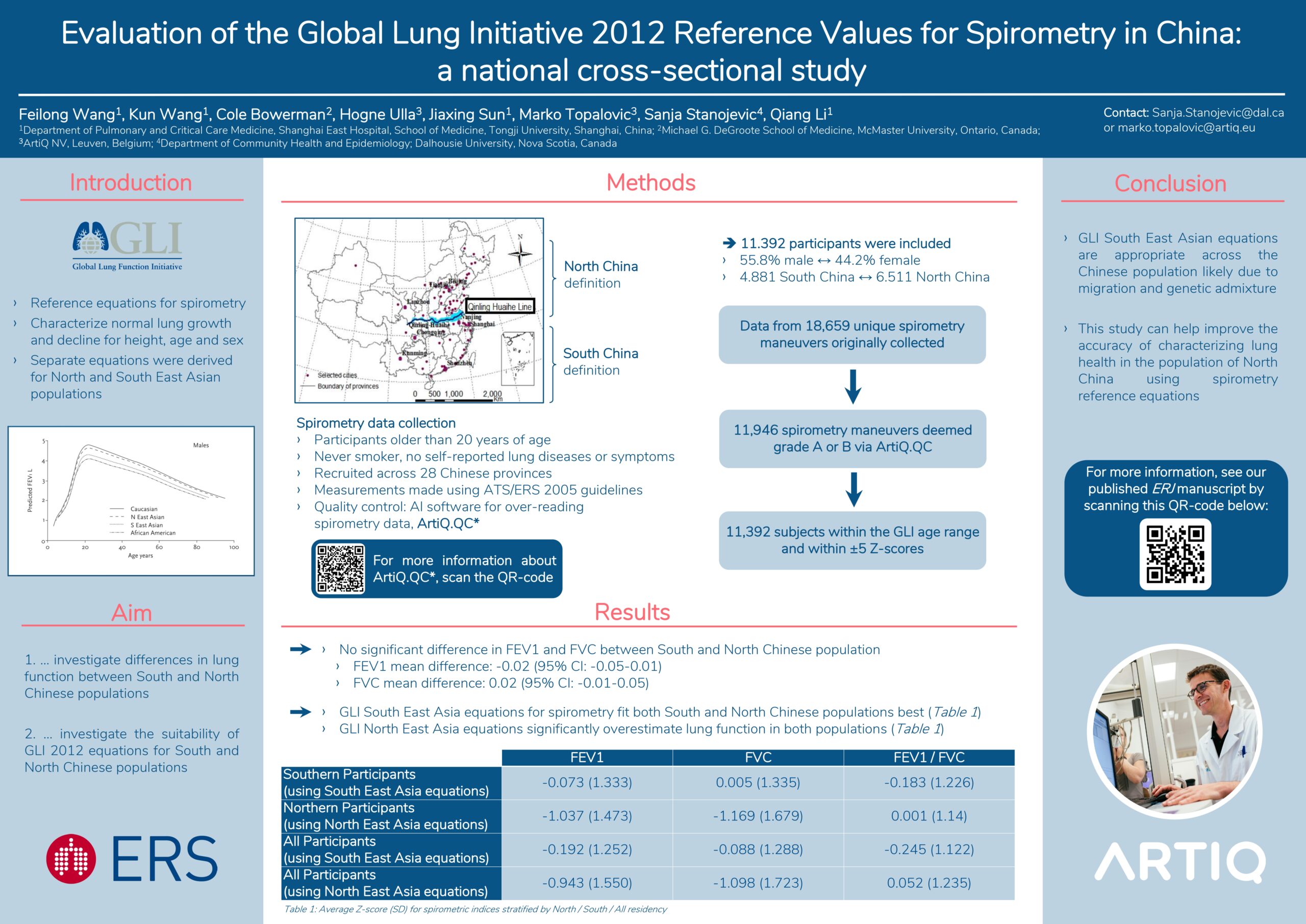Evaluation of the Global Lung Initiative 2012 Reference Values for Spirometry in China:a national cross-sectional study.

Read the official abstract here.
Background: Reference values for spirometry derived from people of Chinese ancestry are unavailable despite the high burden of respiratory diseases in China. The ERS Global Lung Function Initiative (GLI) recommended the use of separate equations in South and North Chinese populations in 2012.
Aims: We aimed to investigate the difference in lung function between South and North Chinese populations, as well as the suitability of GLI 2012 equations for these populations.
Methods: We prospectively recruited healthy non-smoking subjects aged 20 years old and above across 28 Chinese provinces. Spirometry was performed according to ATS/ERS 2005 guidelines and screened using AI software for quality control (ArtiQ.QC). Z-scores were generated for each participant using GLI 2012 prediction equations. South/North China were defined according to the Qinling-Huaihe Line.
Results: A total of 11,392 participants (55.8% male) were included in this study, with 4,881 from the South and 6,511 from the North. There was no significant difference in FEV1 and FVC between the two populations. The South East (SE) Asia equations for spirometry fit both South and North Chinese populations best (Table 1). North East (NE) Asia equations significantly overestimate lung function in both populations (Table 1).
Conclusions: We did not observe differences in lung function between South and North Chinese populations. Our study suggests that GLI SE Asia equations are appropriate across the Chinese population.
Authors: Feilong Wang1, Kun Wang1, Cole Bowerman2, Hogne Ulla3, Jiaxing Sun1, Marko Topalovic3, Sanja Stanojevic4, Qiang Li1
1. Department of Pulmonary and Critical Care Medicine, Shanghai East Hospital, School of Medicine, Tongji University, Shanghai, China.
2. Michael G. DeGroote School of Medicine, McMaster University, Ontario, Canada
3. ArtiQ NV, Leuven, Belgium
4. Department of Community Health and Epidemiology; Dalhousie University, Nova Scotia, Canada
